EDITORIAL NOTE: We were recently provided with a report on a driver awareness technology from the innovation idea analysis firm Invention Evaluator, one of our new sponsors. This sample report contains includes very thorough data on tech developers currently working in the fields of facial and eye image recognition. Much of the background information for this article was taken from this report.
__________________
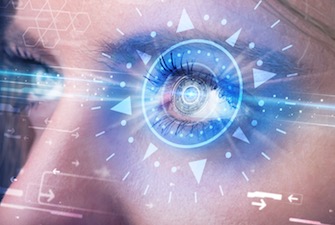 Biosensor technologies, a tech sector which involves the use of devices that can detect and measure biological functions in living things, is set to become a very valuable business in the coming decade. According to a recent report from Frost & Sullivan, the global market for biosensors generated $11.53 billion in revenues during 2014, a figure that the firm expects to rise to $28.78 billion by 2021. Much of these gains are being seen in the healthcare and food industries but there have been intriguing biosensor innovations designed for automotive safety. For example, a Canadian startup known as Sober Steering has created a touch interlock device for a vehicle’s steering wheel which can render a car immobile if the steering wheel’s biosensors detect alcohol through a driver’s hands. German automaker BMW (ETR:BMW) has developed its own biosensor technology to detect if a driver is experiencing a medical emergency and putting the car into an autonomous mode for getting a driver to safety.
Biosensor technologies, a tech sector which involves the use of devices that can detect and measure biological functions in living things, is set to become a very valuable business in the coming decade. According to a recent report from Frost & Sullivan, the global market for biosensors generated $11.53 billion in revenues during 2014, a figure that the firm expects to rise to $28.78 billion by 2021. Much of these gains are being seen in the healthcare and food industries but there have been intriguing biosensor innovations designed for automotive safety. For example, a Canadian startup known as Sober Steering has created a touch interlock device for a vehicle’s steering wheel which can render a car immobile if the steering wheel’s biosensors detect alcohol through a driver’s hands. German automaker BMW (ETR:BMW) has developed its own biosensor technology to detect if a driver is experiencing a medical emergency and putting the car into an autonomous mode for getting a driver to safety.
Measuring driver awareness with the use of biosensors to enhance road safety is a growing field of interest. Back in April, an IPWatchdog post discussed certain innovations developed to reduce distracted driving, including systems for preventing mobile device texting as well as an apparatus to stimulate drowsy drivers. Advanced driver assistance systems (ADAS) for automobile operators is also becoming a more valuable market, according to London-based market research firm Visiongain, which has published a report stating that the global market for ADAS technologies, including parking assistance and surround-view cameras, will reach $21.7 billion by the end of 2015.
We’ve focused heavily this year on topics of automotive tech, especially with the rise of self-driving autonomous vehicles. With this in mind we thought we’d take some time to focus on some of the innovators within this field of biosensors for facial and eye recognition.
Patent Applications by Main Applicants
According to the Invention Evaluator analysis of smart vision systems the highest proportion of applications for patents relating to face or eye recognition systems originate from China, followed by the United States. Spielo International, Fuzhou Fufeng, and Mitsubishi Electric are among the most prolific applicants (see chart below taken from the report), and patent activity over the past decade shows a consistent rise in applications, indicating a technology growth phase.
Armed with this information we decided to look at the patent activities of several of the main applicants in the face or eye recognition space, which follows.
Spielo International Brings Facial Recognition to Casino Gaming
 The largest portfolio related to facial and eye tracking algorithm technology was held by Spielo International Canada, headquartered in Moncton in the Canadian province of New Brunswick. Highlighting the diverse array of applications for this type of biosensor technology is the fact that Spielo is not involved in developing driver awareness systems but rather user detection systems for video games, especially casino arcade games.
The largest portfolio related to facial and eye tracking algorithm technology was held by Spielo International Canada, headquartered in Moncton in the Canadian province of New Brunswick. Highlighting the diverse array of applications for this type of biosensor technology is the fact that Spielo is not involved in developing driver awareness systems but rather user detection systems for video games, especially casino arcade games.
Spielo is a subsidiary of Lottomatica, an Italian-based company which does business in the gaming industry under the name of GTECH. Despite holding a portfolio of only 30 U.S. patents, it does have a leading research and development position in the field of facial and eye recognition. The company relies on sales of its casino gaming machines and in April 2013 Spielo was selected by the Ontario Lottery and Gaming Corporation as the official provider of online casino games for the residents of the province of Ontario. It was estimated that the real money website operated by Spielo could generate revenues of $375 million for the province over the term of the five-year agreement.
A system for the dynamic adjustment of content displayed by gaming machines based on a player’s detected demographics is at the center of U.S. Patent Application No. 20140323192, entitled Gaming Machine Having Camera for Adapting Displayed Images to Detected Players. This would protect a gaming machine having a display screen for displaying a game of chance, a camera for taking a picture of a gaming machine’s player, a processor controlling both the display screen and player awards based on game outcome, sets of alternative animation images stored in a memory for display on a screen, rules software stored in a memory for associating detected physical characteristics with sets of alternative animation images and display software to display the set of stored animation images selected by the rules software. This innovation is intended to enable casino games to display animation based on a person’s age or gender for a more engaging experience. More effective attract modes to increase plays on a particular gaming machine are expressed within U.S. Patent Application No. 20140323194, titled Gaming Machine Having Camera for Adapting Displayed Images to Player’s Movements. The gaming machine disclosed here includes a display screen, a digital camera for taking a set of pictures of a gaming machine’s player, a processor controlling the display screen to display a game of chance, detection software for detecting physical movement of the player from the pictures and display software for displaying animation images selected based on the player’s physical movement. This system would enable a gaming machine which is in attract mode to generate a digital character that looks in the direction of a passing spectator and recreates features of that spectator to encourage play.
Mitsubishi Electric Develops Biosensors for Gesture Control
The Mitsubishi Electric Corp. (TYO:6503) of Tokyo is another major player in the realm of camera tracking technologies. It’s the electronics and electrical equipment development arm of the Mitsubishi UFJ Financial Group, a business group which also includes the automaker Mitsubishi Motors (TYO:7211). That business alliance is encouraging the incorporation of many of these tracking technologies into automobiles and an EMIRAI 3 xDAS concept car unveiled by Mitsubishi Electric this October features gesture detection for control of indoor air temperature or music volume as well as lane and moving object detection outside of the vehicle. Camera systems for obstacle avoidance are also incorporated into another concept car, the Mitsubishi eX compact crossover all-electric powertrain vehicle.
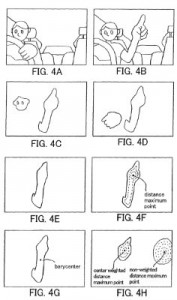 Gesture control systems were at the center of one Mitsubishi Electric patent which we noted, U.S. Patent No. 8681099, titled Manipulation Input Device Which Detects Human Hand Manipulations from Captured Motion Images. It would protect a manipulation input device with a picture-taking apparatus including a visible light camera, a hand region detector detecting a human hand region from an image captured by the picture-taking apparatus, a hand manipulation determination unit determining hand manipulation from the shape and motion of a hand region and a selection menu representation unit that notifies a user of the menu selected based on the detected manipulation. This invention is intended to provide a highly accurate system of detecting user gestures to interact with navigation systems or the air conditioner in a way that allows a driver to interact while paying attention to the road. An anti-theft monitoring system to dissuade thieves is featured within U.S. Patent No. 8624734, entitled Intruder Identifying Method, Intruder Identifying Device and Intruder Identifying Sensor Device. The intruder identifying method protected here utilizes an intruder identifying device comprised of an electric wave transmitting unit including a leakage coaxial cable laid along the outer edge of an intrusion preventing area, an electric wave receiving unit including a leakage coaxial cable also laid along the intrusion preventing area’s outer edge for outputting a reception signal and then an intruder identifying sensor device for determining intrusion into an intrusion preventing area as well as an intrusion position. This system, which also uses rotating monitor cameras to track intruder movements, is designed to return less false intrusion alarms in response to small animals or other objects contacting the leakage coaxial cable.
Gesture control systems were at the center of one Mitsubishi Electric patent which we noted, U.S. Patent No. 8681099, titled Manipulation Input Device Which Detects Human Hand Manipulations from Captured Motion Images. It would protect a manipulation input device with a picture-taking apparatus including a visible light camera, a hand region detector detecting a human hand region from an image captured by the picture-taking apparatus, a hand manipulation determination unit determining hand manipulation from the shape and motion of a hand region and a selection menu representation unit that notifies a user of the menu selected based on the detected manipulation. This invention is intended to provide a highly accurate system of detecting user gestures to interact with navigation systems or the air conditioner in a way that allows a driver to interact while paying attention to the road. An anti-theft monitoring system to dissuade thieves is featured within U.S. Patent No. 8624734, entitled Intruder Identifying Method, Intruder Identifying Device and Intruder Identifying Sensor Device. The intruder identifying method protected here utilizes an intruder identifying device comprised of an electric wave transmitting unit including a leakage coaxial cable laid along the outer edge of an intrusion preventing area, an electric wave receiving unit including a leakage coaxial cable also laid along the intrusion preventing area’s outer edge for outputting a reception signal and then an intruder identifying sensor device for determining intrusion into an intrusion preventing area as well as an intrusion position. This system, which also uses rotating monitor cameras to track intruder movements, is designed to return less false intrusion alarms in response to small animals or other objects contacting the leakage coaxial cable.
BioDentity Systems R&D Focuses on Biometrics for Security Solutions
Headquartered in Kanata, Ontario, BioDentity Systems Corp. is another Canadian company with a leading position in facial and eye tracking and recognition technologies, according to the Invention Evaluator report. The company, which was acquired in April 2004 by CryptoMetrics Inc. of Tuckahoe, NY, offers a suite of biometric software security solutions for the encryption of virtual drives or website logins based on the detection of physical features. CryptoMetrics has gone to land major contracts with U.S. school photography firms and even the Taiwanese government for the development of an electronic passport platform including face recognition products.
 We did manage to find one patent application held in the BioDentity IP portfolio: U.S. Patent Application No. 20090080715, entitled Face Imaging System for Recordal and Automated Identity Confirmation. It would protect a face imaging system for identity confirmation of a target including a camera unit controller and a video camera for capturing images of the target which are sent to the camera unit controller; the camera unit controller additionally has a face detection system and a face capture system which work together to sequentially analyze face images. This system is designed to address shortcomings in conventional identity confirmation systems which enable highly accurate and rapid face detection.
We did manage to find one patent application held in the BioDentity IP portfolio: U.S. Patent Application No. 20090080715, entitled Face Imaging System for Recordal and Automated Identity Confirmation. It would protect a face imaging system for identity confirmation of a target including a camera unit controller and a video camera for capturing images of the target which are sent to the camera unit controller; the camera unit controller additionally has a face detection system and a face capture system which work together to sequentially analyze face images. This system is designed to address shortcomings in conventional identity confirmation systems which enable highly accurate and rapid face detection.
Former Imaging Giant Eastman Kodak Innovates Facial Recognition for Digital Cameras
Although we’ve been seeing a lot of examples of biometric imaging technologies being applied to non-traditional sectors like automotive and casino gaming, one of the larger IP portfolios in this field belongs to Eastman Kodak (NYSE:KODK), an imaging product company based in Rochester, NY. The development of digital imaging technologies for face detection and recognition has been an R&D pursuit of Kodak’s for nearly two decades. These innovations are incorporated into digital camera products like the Kodak EasyShare M530, which offers smart camera functions for facial detection and recognition.
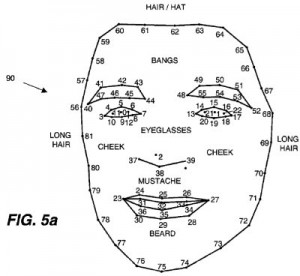 The dynamic recognition of individuals found in images or photo collections is the subject of U.S. Patent No. 8180112, which is titled Enabling Persistent Recognition of Individuals in Images. It protects a computer implemented method for enabling computer recognition of a particular person in images by analyzing facial images of a person using a facial recognition model to determine changes in a person’s facial appearance, calculating a subject recognition confidence value responsive to the facial recognition model, comparing the calculated subject recognition confidence value to prior subject recognition confidence values, analyzing identified changes in the subject recognition confidence values, generating a new facial recognition model if it’s determined that a new model should be generated and using the generated facial recognition model for subsequent person recognition tasks. The persistent identification techniques employed by this
The dynamic recognition of individuals found in images or photo collections is the subject of U.S. Patent No. 8180112, which is titled Enabling Persistent Recognition of Individuals in Images. It protects a computer implemented method for enabling computer recognition of a particular person in images by analyzing facial images of a person using a facial recognition model to determine changes in a person’s facial appearance, calculating a subject recognition confidence value responsive to the facial recognition model, comparing the calculated subject recognition confidence value to prior subject recognition confidence values, analyzing identified changes in the subject recognition confidence values, generating a new facial recognition model if it’s determined that a new model should be generated and using the generated facial recognition model for subsequent person recognition tasks. The persistent identification techniques employed by this
invention without requiring scheduled updates to facial recognition models, which can reduce the success of identifying subjects. The tracking of eye gaze and facial orientation are also at the center of U.S. Patent No. 8253770, tit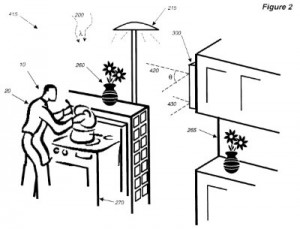 led Residential Video Communication System. It discloses a video communication system including a video communication device with an image capture device, an image display device, an audio system processor with an audio emission device that generates sound and an audio capture device to capture local sound, and then a control logic that automatically analyzes the video scene captured by the capture device to determine when intra-scene or inter-scene transitions have occurred based on local environment cues. The resulting invention is a video communication system optimized for residential environments by giving users more tools for managing privacy of the residential environment captured by the video communication system; the system also provides tools for correcting eye gaze in video communication participants.
led Residential Video Communication System. It discloses a video communication system including a video communication device with an image capture device, an image display device, an audio system processor with an audio emission device that generates sound and an audio capture device to capture local sound, and then a control logic that automatically analyzes the video scene captured by the capture device to determine when intra-scene or inter-scene transitions have occurred based on local environment cues. The resulting invention is a video communication system optimized for residential environments by giving users more tools for managing privacy of the residential environment captured by the video communication system; the system also provides tools for correcting eye gaze in video communication participants.

![[IPWatchdog Logo]](https://ipwatchdog.com/wp-content/themes/IPWatchdog%20-%202023/assets/images/temp/logo-small@2x.png)

![[[Advertisement]]](https://ipwatchdog.com/wp-content/uploads/2023/01/2021-Patent-Practice-on-Demand-1.png)
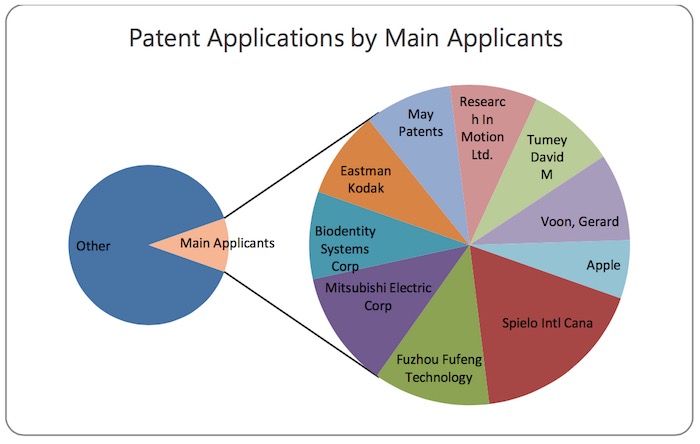

![[Advertisement]](https://ipwatchdog.com/wp-content/uploads/2024/04/Patent-Litigation-Masters-2024-sidebar-early-bird-ends-Apr-21-last-chance-700x500-1.jpg)

![[Advertisement]](https://ipwatchdog.com/wp-content/uploads/2021/12/WEBINAR-336-x-280-px.png)
![[Advertisement]](https://ipwatchdog.com/wp-content/uploads/2021/12/2021-Patent-Practice-on-Demand-recorded-Feb-2021-336-x-280.jpg)
![[Advertisement]](https://ipwatchdog.com/wp-content/uploads/2021/12/Ad-4-The-Invent-Patent-System™.png)







Join the Discussion
No comments yet.